The saga of the Porsche 911 viewed through the medium of model cars - Vintage of 1966
| Vintage 1966 |
| SEPTEMBER 1965 : Presentation of two Targa prototypes at the IAA in Frankfurt. According to advertising at the time: "The world's first convertible with standard safety". Series production only begins in December 1966, with the first Targas being delivered from spring 1967. |
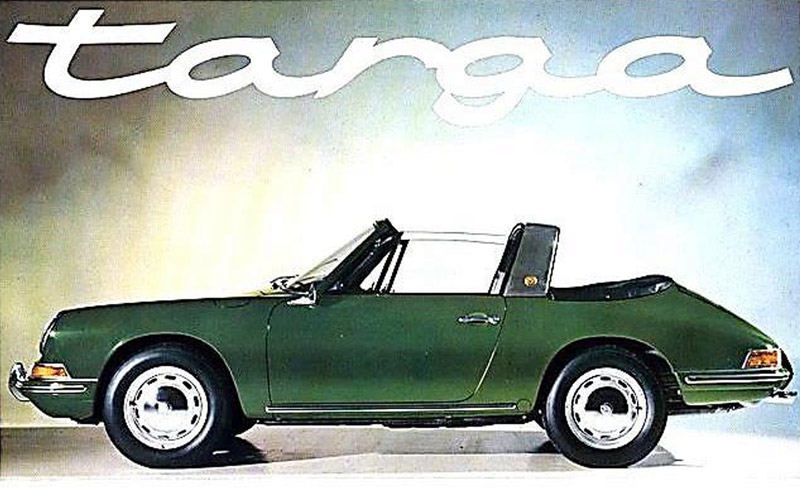 |
| Front page of the first Porsche Targa brochure. |
| On the model presented above at the 1965 Frankfurt Motor Show, the round enamel plaque fitted to the roll bar is identical to the optional one centered on the chrome hubcaps of the steel wheels. The emblem on the roll bar will be replaced by the golden Targa lettering when it is ready for series production. |
| FEBRUARY 1966 : Weber 40IDA carburetors replace the Solex carburetors, from engine 907101 and chassis 305101. |
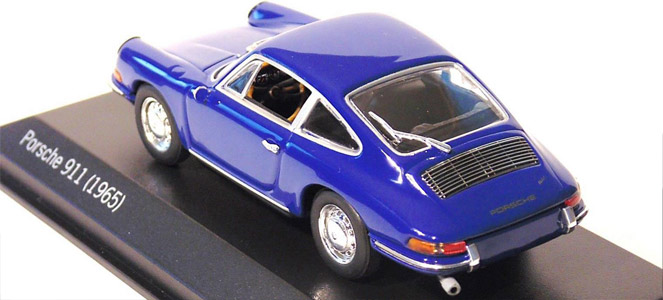 |
| Porsche 911 - Minichamps MAP02001113 |
| Summary for the year of manufacture 1965 (09/1964->07/1965) and year of manufacture 1966 (08/1965->07/1966) (series 0) | |||||
| 912 | Coupé | 1.6 L | 90 HP | 13,5 s | 185 Km/h |
| Exterior details : identical to the 911 below except : - The "PORSCHE" lettering and the "912" emblem diagonally on the rear hood are silver-colored. Interior details : identique à la 911 ci-dessous, excepté : - The dashboard has only 3 dials and the lining is in aluminium. |
| 901 - 911 | Coupé | 2.0 L | 130 HP | 9,1 s | 210 Km/h |
| Exterior details : - Domed headlight glass, without top edge with two adjustment screws. - Chrome-plated wipers aligned to the right when stationary. - Round, chrome-plated exterior mirrors, small, rimless and slightly tapered, brand Durant. Optional mirrors with a sportier aspect, Talbot brand. |
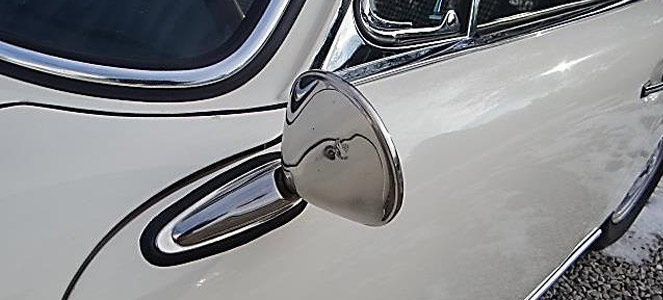 |
| - Chromed brass horn grille with 4 fixing screws. In the second part of the 1966 vintage, these grilles will be in zamak (an alloy of zinc, aluminium, magnesium and copper), always chrome-plated, but only fixed with 2 less visible screws. |
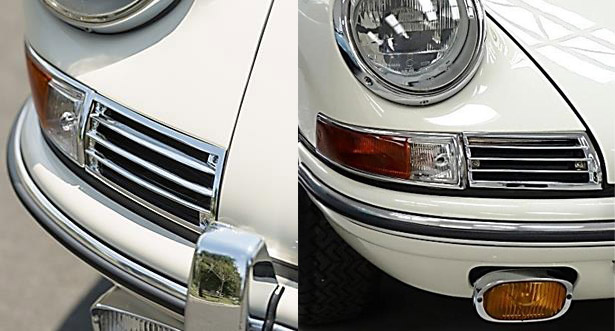 |
| Optionally, there are special grilles that allow the installation of high-beam headlights. - The fog lights are optional (except on certain markets) and are placed under the front bumper, in front of an opening which, if they are not present, is blocked by a bodywork element. They are rounded at the corners up to the end of the 1968 vintage (Hella 128). - Chrome strips of narrow sills. - Rear hood with chromed ventilation grille resting on a vertical bodywork element visible behind the grille in the center of the opening. The horizontal bars are held by 6 vertical bars, the whole is assembled with screws and bolts. The horizontal bars at the top and bottom are doubled. |
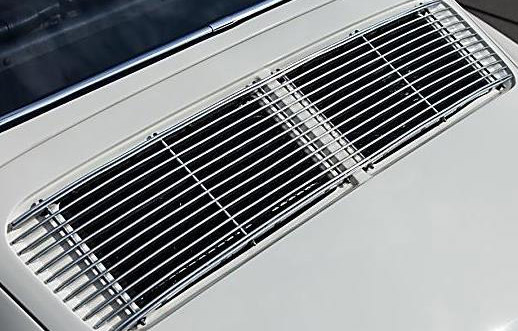 |
| - "PORSCHE" lettering on the rear hood in gold (larger than on the prototypes), with or without "911" emblem in italics, lettered diagonally. The letters of the word "PORSCHE" are joined together to form a one-piece logo. The same applies to the "911" emblem. |
 |
| - Painted front and rear bumpers adorned with an aluminum strip decorated with a subtle black rubber stripe. The rear bumpers are all chrome, as are the front bumpers, which are mandatory in the US and optional for the rest of the world. - Narrow, flat, chrome-plated door handle with exposed handle. |
 |
| - From model year 1966 the rear window wiper is available as an option. - 4.5Jx15" metal rims (165 R 15 tires) with a flat chrome hub cap, decorated with a round Porsche Crest. Chrome-plated or with a colored central logo on request. Interior details : - All dashboard knobs are round and identical to the 356. - Wooden dashboard trim. - The steering wheel rim is made of wood and has a large diameter (400 mm). In late 1965, a horn control called "Butterfly" was offered as an option. |
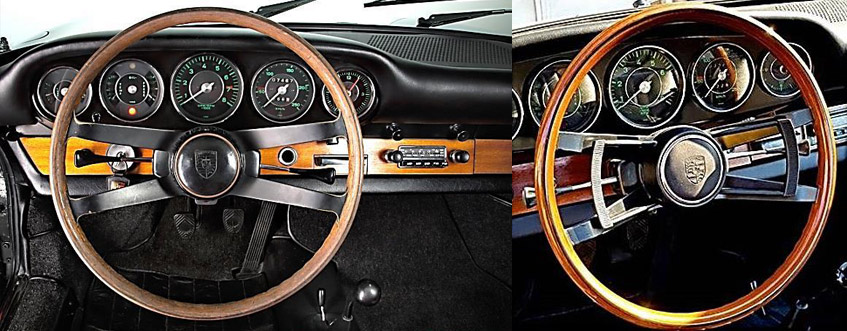 |
| - Hole for inserting the ignition key on the left side of the steering wheel, surrounded by a brass ring. This is replaced by a large plastic ring towards the end of the 1966 vintage. |
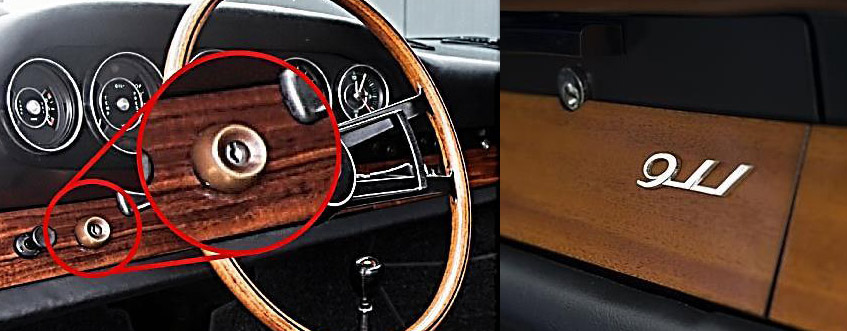 |
| - Application of the initials “911” in slanted numerals, placed horizontally on the glove box lid. - The shift knob is mushroom-shaped, the shift grid inscription is not yet available. - The door deflectors are pivotable and have a locking system that will later be covered with plastic. - The inside of the doors has a pocket under a large armrest. The armrest, only on the passenger side, is equipped with a grab handle. - The doors are opened by a horizontal push button on the front of the armrests. |
 |
| - The door windows are operated by a triangular perforated crank. - The side windows can be opened ajar thanks to a chrome compass. - The seats have chromed metal side supports. The backrest can be tilted forward and the passenger seat has a lock. - Three types of seat belts are available as an option: lap belt, diagonal belt and both. - As an option, the seats can also be equipped with headrests that are attached behind the backrest. - The interior mirror is completely chromed and fixed to the ceiling of the passenger compartment with three screws. - The warm air heating is controlled via a lever in front of the gear lever and via flap openings under the door sills. - The floor mats are initially made of rubber and then replaced with velor mats. |
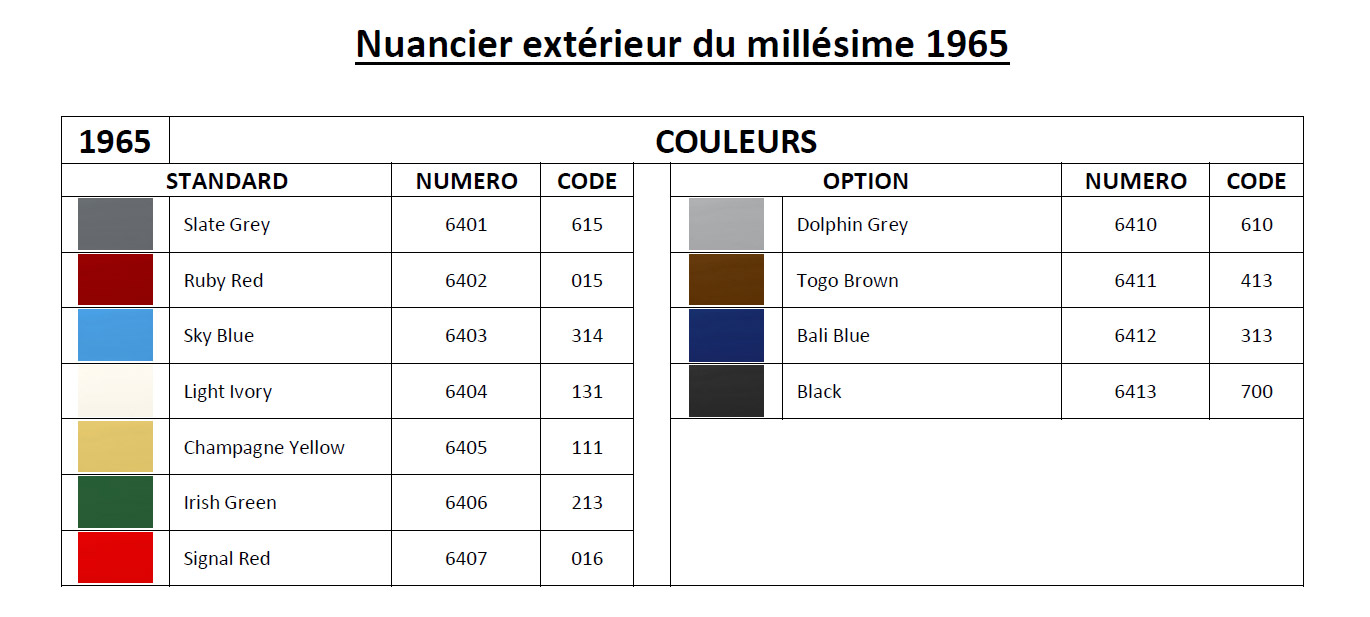 |
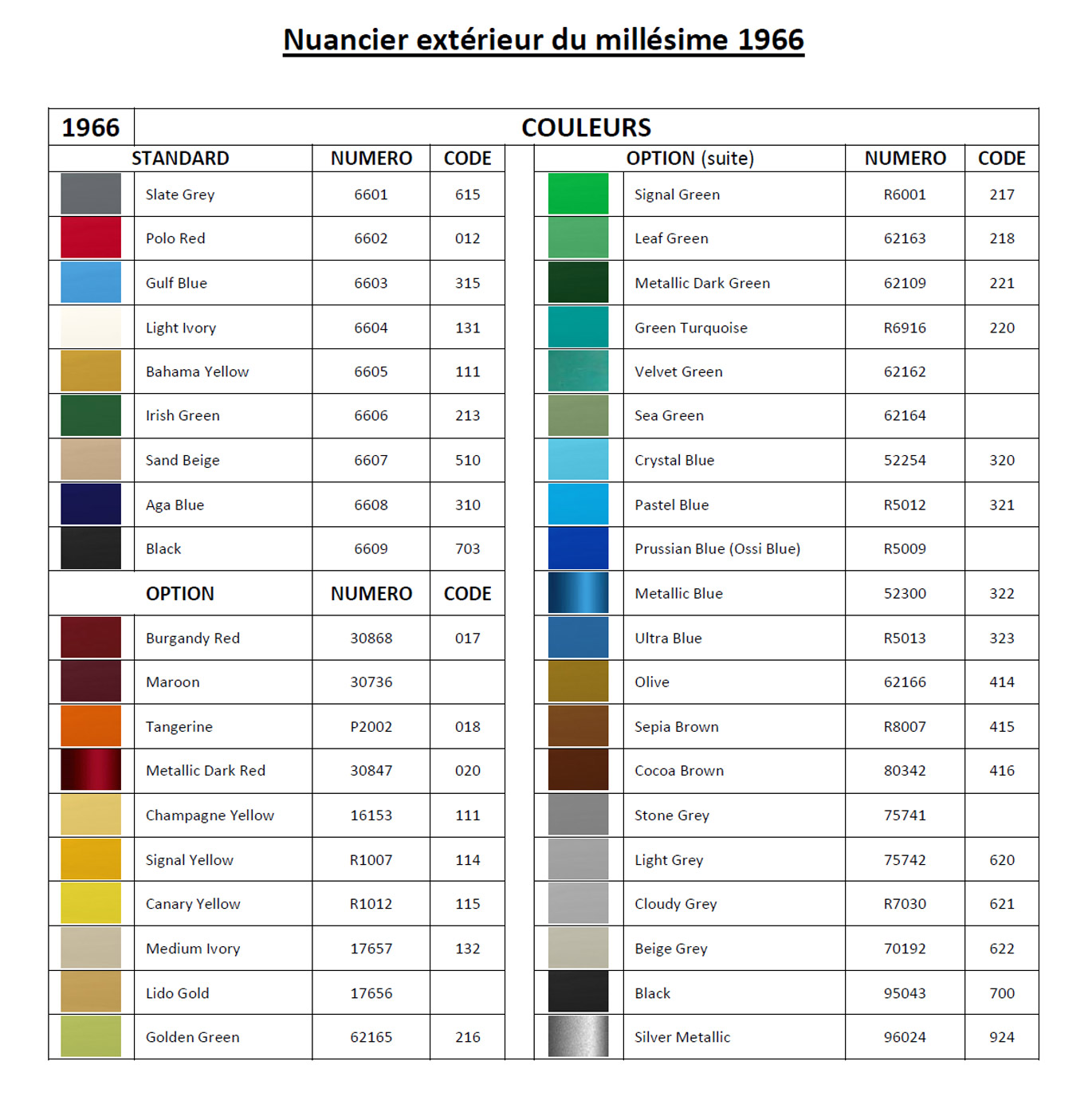 |
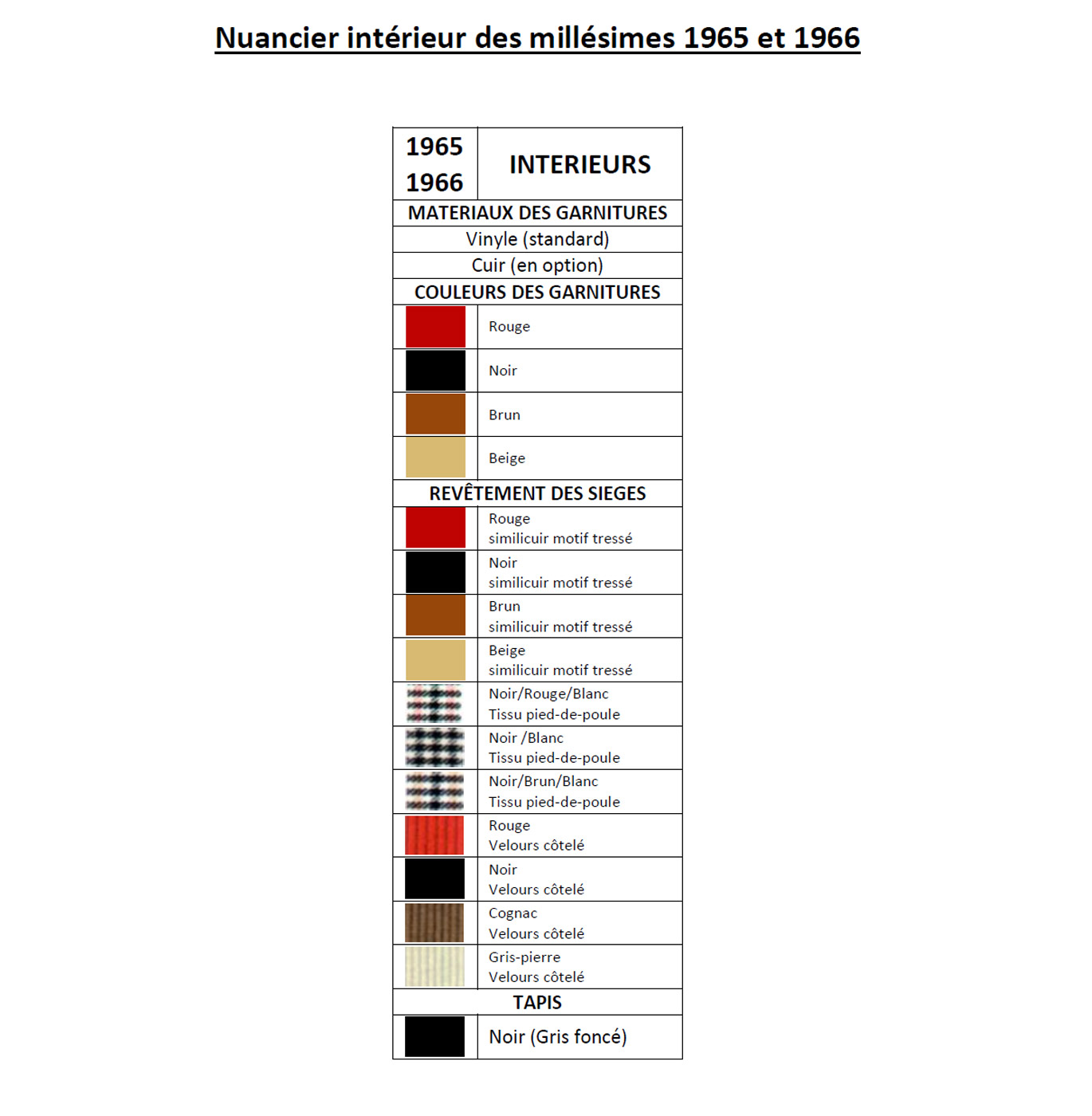 |
|
|




































































































































































































































































